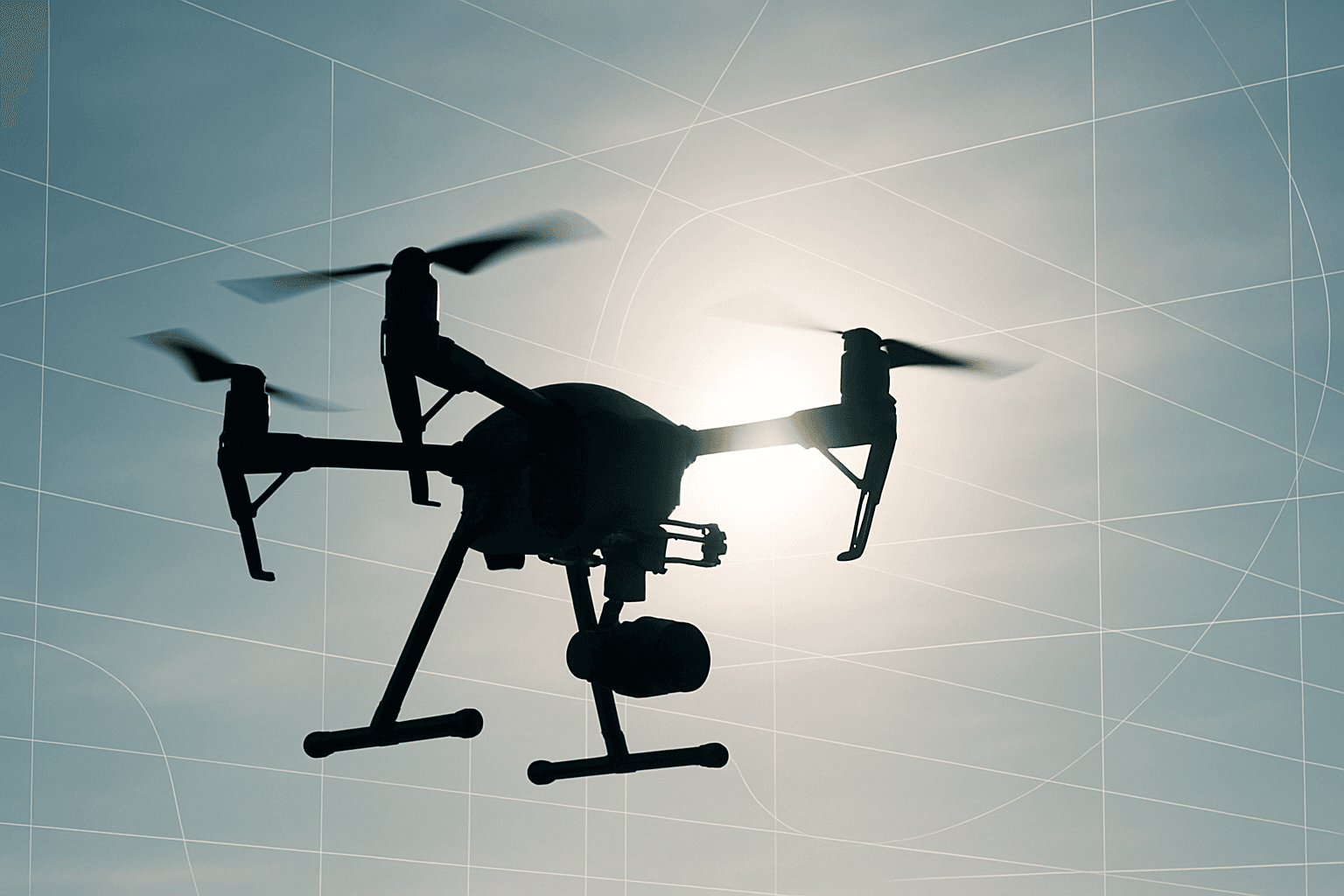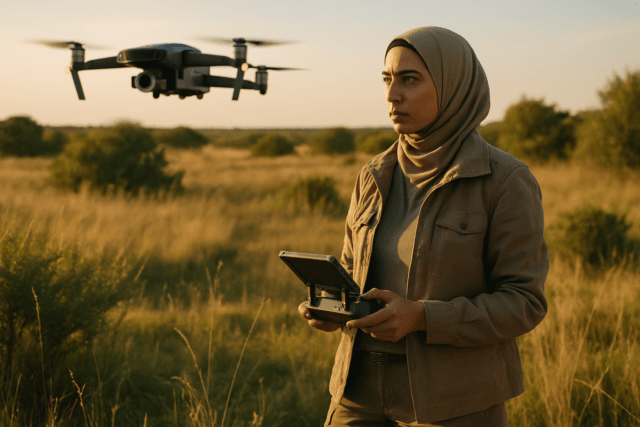Drone photography has revolutionised how we capture the world, offering breathtaking aerial perspectives previously unattainable. However, with this technology comes the responsibility of adhering to strict regulations. As of June 2025, the UK drone laws are evolving, and understanding them is crucial for both recreational and commercial drone pilots to ensure safe and legal flying. Failing to comply with these regulations can lead to hefty fines and grounded operations.
Understanding the Basics of UK Drone Laws in 2025
The UK Civil Aviation Authority (CAA) is at the forefront of regulating drone activities. The regulations cover various aspects, including registration, operational categories, flying restrictions, and remote identification. It’s essential to stay updated with the latest changes to avoid legal issues.
Registration and Identification
If you own or are responsible for a drone or model aircraft weighing 250g or more, or any drone equipped with a camera (excluding toys), registration with the CAA is mandatory before outdoor flights. This registration ensures accountability and operator responsibility. Unregistered drones can lead to fines of up to £1,000.
Key Points:
- Drones over 250g or with a camera must be registered.
- Registration needs annual renewal.
- Display your Operator ID visibly on the drone.
Mandatory Labelling
To comply with the UK’s 2025 drone laws, ensure that your drones and model aircraft are labelled with your operator ID. This unique identifier helps in accountability and should be visible on the outside of the aircraft or within an easily accessible compartment.
Operational Categories: Open, Specific, and Certified
Drone operations are categorised into ‘Open,’ ‘Specific,’ and ‘Certified,’ each with its own set of requirements and restrictions.
- Open Category: This category covers low-risk activities. As of January 1st, 2026, drones in this category need to meet new safety and technical standards, with the CAA monitoring compliance.
- Specific Category: For higher-risk operations, the CAA adopts the Specific Operations Risk Assessment (SORA) methodology since April 23, 2025. SORA provides a quantitative framework for detailed risk assessments, especially for complex missions like beyond visual line of sight (BVLOS) flights.
- Certified Category: This category involves the highest risk operations, necessitating stringent certification and oversight.
Sub-categories within the Open Category have been renamed to enhance clarity:
- A1 (Flying Over People): Allowed for drones under 250g. C1 drones, weighing up to 900g, including models like Mavic 3 Classic and Air 3, can also fly over uninvolved individuals.
- A2 (Flying Close to People): Requires a C2 drone and an A2 Certificate of Competency.
- A3 (Flying Far from People): Applies to drones up to 25kg, permissible only in remote areas.
Flight Restrictions and Limitations
Several rules govern where and how you can fly your drone:
- Maximum Altitude: Drones must not exceed 400 feet (120 meters) above the surface to maintain separation from manned aircraft. Violations can result in fines up to £2,500.
- Visual Line of Sight (VLOS): Operators must maintain a clear, unaided visual line of sight with the drone at all times.
- Restricted Airspace: Permission is essential before flying in restricted airspace, such as near government buildings or military bases.
- Airport No-Fly Zone: A strict no-fly zone exists within a 5-kilometer (3-mile) radius of airports.
- Distance from People and Built-up Areas: Drones weighing 250 grams or more should operate at least 50 meters away from people and 150 meters away from residential, industrial, or commercial areas.
Night Flying Regulations
Compliance with drone laws is necessary during both day and night operations. For night flying, additional safety measures, such as appropriate lighting and thorough weather checks, are crucial. Non-compliance can lead to fines up to £2,500.
Key Changes and Updates in 2025
Several significant updates have been implemented or are expected to be enforced by 2026.
Drone Class Marking
Starting January 1, 2026, the UK will fully implement drone class marking. Drones in the Open Category must meet new safety and technical standards. The CAA, acting as the Market Surveillance Authority (MSA), will monitor compliance among manufacturers, importers, and distributors. If you own a drone without class marking, verify if it qualifies under transitional provisions, valid until the 2026 deadline.
Specific Operations Risk Assessment (SORA)
Since April 23, 2025, the CAA has adopted SORA to evaluate and approve higher-risk drone operations. This quantitative framework standardises safety across the industry, enabling detailed risk assessments for specific category operations, including BVLOS flights. Applications are processed through the digital UK SORA Application Service.
Beyond Visual Line of Sight (BVLOS) Operations
New policies are making BVLOS operations more accessible. Although still requiring specific approval and adherence to safety measures, these operations are permitted at low altitudes near structures to minimise risks to other aircraft, reducing operational costs and improving efficiency.
Remote Identification (Remote ID)
One of the most significant upcoming changes is the implementation of Remote ID. As of May 8, 2025, the CAA announced that from January 1, 2026, all new drones over 100 grams with a camera must have Direct Remote ID. By January 1, 2028, all drones must have this feature. Remote ID allows drones to broadcast identification and location data, enhancing accountability and safety. This can be achieved through a software upgrade or by attaching a transmitting device.
Weight and Registration Updates
The CAA has reduced the registration weight threshold from 250g to 100g for drones equipped with a camera. If your drone is over 100g and has a camera, you will need both a flyer ID and an operator ID.
Best Practices for Drone Photography in the UK
To ensure you remain compliant with drone photography regulations, consider these best practices:
- Stay Informed: Regularly check the CAA website for updates and changes to drone laws.
- Plan Your Flights: Before each flight, carefully plan your route, considering no-fly zones, restricted areas, and distance requirements from people and built-up areas.
- Maintain Visual Line of Sight: Always keep your drone within your visual line of sight.
- Respect Privacy: Be mindful of people’s privacy and avoid recording or photographing individuals without their consent.
- Label Your Drone: Ensure your operator ID is clearly visible on your drone.
- Check Weather Conditions: Always check the weather forecast before flying.
- Comply with Altitude Restrictions: Never exceed the maximum altitude of 400 feet (120 meters).
- Register and Train: Ensure you are registered with the CAA and have completed the necessary training.
Insurance for Commercial Drone Operations
If you’re using drones for commercial purposes, having adequate insurance is essential. Insurance protects you against potential liabilities, such as property damage or personal injury. Ensure your insurance policy covers all your drone operations and meets the CAA’s requirements.
Resources for Drone Pilots
Several resources are available to help drone pilots stay informed and compliant:
- CAA Website: The official website provides comprehensive information on drone regulations, guidance, and updates.
- Drone Pilot Training Courses: Enrolling in a certified training course can provide you with the knowledge and skills needed to operate drones safely and legally.
- Online Forums and Communities: Engage with other drone pilots in online forums and communities to share experiences and stay updated on the latest news and regulations.
Conclusion
Drone photography offers incredible opportunities, but it is vital to operate within the boundaries of the law. By staying informed, adhering to regulations, and following best practices, you can enjoy the benefits of drone photography while ensuring the safety and privacy of others. The evolving landscape of UK drone laws in 2025 and beyond requires continuous learning and adaptation to remain compliant and responsible in your aerial pursuits.





